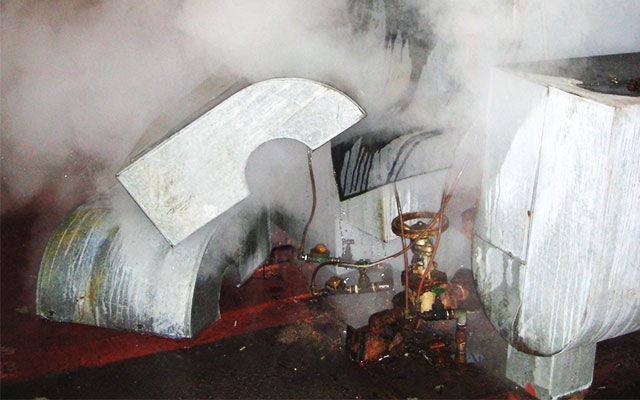Author: Henri Azibert
When we consider leaks in an industrial process, we typically are concerned with loss of product or contamination of the environment. If the product is expensive, the loss through leaks will be costly. In a waste water stream, there is not any cost associated with the product, but certainly, it cannot be allowed to contaminate the surroundings. In other cases, such as water, the product is neither costly nor dangerous. So, should we be concerned with minor leaks?
There is one more consideration we need to be concerned with: if a process can be used to transfer energy, then fluid leaks can represent an energy loss. Process energy can be dissipated into the atmosphere. A good example of a sealing system that wastes energy through leakage can be found in a power plant that provides electricity to our homes.
In a power plant, the steam condensate circuit is a closed loop system. Water is heated in a boiler; it is then flashed to steam, and the thermal energy is converted to electricity as the steam expands in a turbine driving a generator. The steam is then condensed back to water to be reheated and repeat the cycle. Since the same water is reused continuously, once the system is filled up, there should not be any need to add any more water. That is…except for leaks!
Water needs to be added to the system to make up what is lost through the system leaks. It is referred to as “make-up water”. Certainly, when you consider all the pipes, valves, pumps, the turbine, the condensers, the thousands of flanges, the high pressures and temperatures, it is easy to understand that some of the process water will be lost to leaks. In an average power plant, a make-up water rate of 50 gallons per minute is a common rate for make-up water. Of course, there is some cost associated with treating water to be used in the process loop. But for this analysis, we will only focus on the cost of lost energy.
Some of the leakage is from feed-water to the boiler, some is lost as steam, and some is lost as condensate. Feed-water, steam and condensate are at a higher energy state than make-up water. The energy required to elevate make-up water at 500F level to:
Condensate: 162 BTU/lb
Feed-water: 320 BTU/lb
Steam: 1350 BTU/lb
With a typical system where leakage from feed-water is approximately 25%, from steam 25%, and from condensate 50%, the energy required for 1 lb of leakage is:
162 x .5 + 320 x .25 + 1350 x .25 = 498.5 BTU/lb
Or 4157 BTU/Gal.
With a water make-up rate of 50 GPM, the energy required to be added to the system is:
4157 BTU/Gal x 50 GPM x 60 min/hour x 24 hours/day x 365 days/year = 109,245,960,000 BTU/Year
Or 32,016,831 kilowatt hour
This is just the energy loss from leaks! It does not include reheating by the system of the cooling of seal areas.
To place this in perspective, the average annual electricity consumption for a U.S. residential utility customer is about 11,000 kWh. 50 GPM make-up water that needs to be added in a power plant is the equivalent of the electricity consumption of about 2900 homes. Or at an average retail price of $0.11/kWh, this represents a cost of $3,521,851!
There are many processes that operate at temperatures different from ambient; most often at a higher temperature, but also some at a lower temperature. For all these processes, any leak results in an energy loss. We need to seal energy in a system, not just liquids. The energy cost of leaks should never be neglected.





Comments